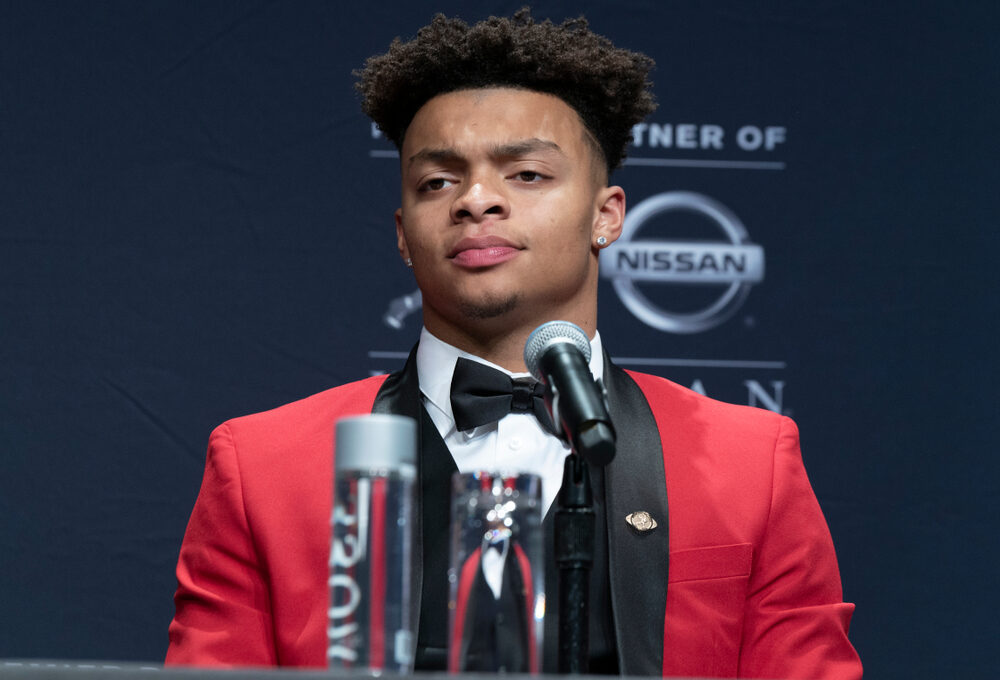Teams are taking the field for another college football season, and there are already major scandals surrounding the sport’s most expensive employees.
Ohio State coach Urban Meyer and Maryland coach D.J. Durkin are away from their teams while under disciplinary punishment. Meyer was suspended three games for his handling of abuse allegations against assistant coach Zack Smith.
Meanwhile, Durkin is under administrative leave while Maryland looks into claims he established a “toxic culture” at the school. According to an ESPN report, Durkin’s players were regularly berated and humiliated by coaches for not meeting physical standards during grueling workouts. Maryland officials waited an hour to call 911 after 19-year-old Jordan McNair suffered a seizure while running sprints in May. He later died.
The head men at major college football programs are tasked to be more than just coaches. They are also expected to help thousands of kids bridge the gap between adolescence and adulthood. Coaches travel across the country on recruiting trips trying to convince mostly parents of color (NCAA Records show 61 percent of Division I players identified as non-white in the 2016-2017 season) how they can, not only forward their child’s education and football career, but also mold young boys into model citizens.
But what is college football doing about coaches who bank millions of dollars off the free labor of student-athletes, yet are failing in their obligations to be positive role models for their players?
Meyer, who is making $7 million a year to coach at Ohio State, gave misleading information earlier this summer about how much he knew of criminal investigations into claims Smith beat his now ex-wife, Courtney, in 2016. Meyer blamed the snafu on being poorly prepared for Big Ten Media Day. After the school announced his suspension, Meyer never mentioned Smith’s accuser in his apology to “Buckeye nation” — he only said he was sorry “we’re in this situation” when asked what he would say to Courtney Smith. Meyer later apologized — admitting his “words and demeanor” were inappropriate. Keep in mind, Meyer coaches at a school that suspended players for five games in 2010 for exchanging Buckeye merchandise for free tattoos.
The NCAA doesn’t hesitate to lay the hammer on students, from which a significant portion is black and indispensable to the sport’s multibillion-dollar business model, who break arcane eligibility rules by taking a minuscule slither of the pie. But the playing field is different for college football’s crop of predominantly white coaches. By surrounding students with staff members unfit for the calling, coaches like Meyer and Durkin don’t live up to promises made to parents. And the sad part is both men aren’t outliers.
The sport was supposed to learn its lesson when Baylor fired Art Briles in 2016 for covering up rape allegations against players. A message was supposed to be sent when Penn State fired Joe Paterno in 2011, and the NCAA hit the school with sanctions for turning a blind eye to child sexual abuse allegations against former assistant coach Jerry Sandusky. South Florida firing Jim Leavitt in 2010 for lying about assaulting one of his players should have been a watershed moment.
All of the men were paid handsomely by their respective universities. It took years before the cases were called into question and discipline was handed down. People’s well-being was at stake in each situation.
College Football is a sport where its greatest coaches are revered as larger-than-life figures. But instead of being solely concerned about Saturday’s win-loss results in this Fall, maybe it’s time we keep a closer eye on the atmosphere college football’s one-percenters are creating within their programs Sunday through Friday.
Originally posted 2018-08-31 12:09:05.








